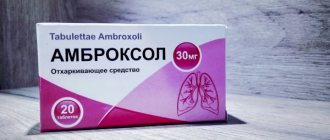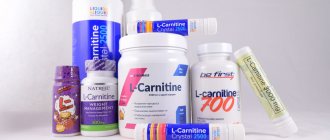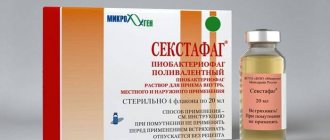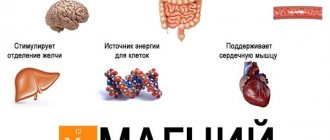Do children need magnesium? Magnesium for children and adults is a vital mineral. It is the 4th most abundant mineral in our body. It is present in all cells of the body. And in the blood, but most of all magnesium is in the bones and teeth. In total, there is approximately 20-30 g of magnesium in the adult human body.
It is necessary
- For conducting nerve impulses and muscle contractions. Including the muscles of the heart and smooth muscles of the intestines.
- Magnesium has a calming effect on the nervous system. It also has an antispasmodic effect on the walls of blood vessels and the smooth muscles of the intestines. Reduces intracranial pressure.
- Magnesium is a membrane stabilizer. Prevents the release of histamine from allergy cells.
- Increases insulin production and cell sensitivity to it.
- Increases metabolic rate.
pharmachologic effect
A drug that replenishes magnesium deficiency in the body.
Magnesium preparation. Magnesium is a vital element that is found in all tissues of the body and is necessary for the normal functioning of cells and is involved in most metabolic reactions. In particular, it is involved in the regulation of the transmission of nerve impulses and muscle contraction.
The body receives magnesium through food. A lack of magnesium in the body can occur when the diet is disrupted or when the need for magnesium increases (with increased physical and mental stress, stress, pregnancy, use of diuretics).
Pyridoxine (vitamin B6) is involved in many metabolic processes and in the regulation of nervous system metabolism. Improves the absorption of magnesium from the gastrointestinal tract and its penetration into cells.
Serum magnesium content from 12 to 17 mg/l (0.5-0.7 mmol/l) indicates moderate magnesium deficiency; below 12 mg/l (0.5 mmol/l) indicates severe magnesium deficiency.
Magnesium as a medicine for adults
Therefore, magnesium (magnesium sulfate) has long been used as a medicine for adults.
- As a mild blood pressure lowering agent. And improves microcirculation (including in pregnant women).
- As part of the drug, asparkam and cardiamagnyl are prescribed for heart diseases to improve its functioning. Since magnesium is involved in the formation of ATP - the supplier of energy for the body's cells, including the heart muscle.
- As an antacid for gastritis with high acidity.
- Magnesium stimulates bile secretion and is used as a choleretic agent.
- It stimulates intestinal motility. And it is used as a mild laxative.
- Magnesium slows down the formation of calcification salts, especially oxalates, by competing with calcium. And it is used as a means of reducing the likelihood of stone formation in the kidneys. The combination with pyridoxine (B6) enhances many of the properties of magnesium.
- As a sedative, a stress reliever, and a remedy for tension headaches, magnesium has gained popularity recently.
special instructions
In case of severe magnesium deficiency or malabsorption syndrome, treatment begins with intravenous administration of magnesium preparations.
If there is a concomitant calcium deficiency, it is recommended to correct the magnesium deficiency before taking calcium supplements or dietary supplements containing calcium.
With frequent use of laxatives, alcohol, intense physical and mental stress, the need for magnesium increases, which can lead to the development of magnesium deficiency in the body.
Information for patients with diabetes mellitus: film-coated tablets contain sucrose as an excipient.
When using pyridoxine in high doses (more than 200 mg/day) for a long time (over several months or in some cases years), sensory axonal neuropathy may develop, which is accompanied by symptoms such as numbness, impaired proprioceptive sensitivity, distal tremor limbs and gradually developing sensory ataxia (impaired coordination of movements). These disorders are usually reversible and disappear after stopping vitamin B6.
The drug in tablet form is intended only for adults and children over 6 years of age. For young children (over 1 year old), it is recommended to use the drug in the form of an oral solution.
Daily requirement for magnesium depending on age according to Tutelyan V.A. 2002
| Age | Requirement, mg/day |
| Up to 1 year | 30-70 |
| From 1 to 3 years | 60-150 |
| From 4 to 6 years old | 200 |
| From 7 to 10 years | 250 |
| Over 10 years old | 300 |
| Adult men | 350 |
| Adult women | 300 |
| Pregnant. and feeding | 450 |
Magnesium is no less necessary for children than for adults. For children, the daily requirement for magnesium can be calculated using the formula 6 mg per 1 kg of body weight.
A person receives magnesium from food and water. Stress, severe illness, great mental and physical stress increase the body's need for magnesium, but reduce its absorption. The need for magnesium also increases during periods of intensive growth. And also for endocrine diseases, for example, thyrotoxicosis and diabetes.
Its digestibility is influenced by the individual characteristics of the body. Activity of various enzymes. In case of gastrointestinal diseases, prolonged diarrhea or frequent vomiting, the absorption of magnesium is reduced.
According to researchers, modern people are deficient in magnesium. They regularly do not get enough of it through food and water. A lack of magnesium in the body, according to the results of examinations conducted in Germany, was detected in 33% of healthy people.
The absorption of magnesium is hindered by a large amount of animal fats and calcium in food. The presence of phytin in it, as well as products with a pronounced diuretic effect. Sausages, sausages, as well as sweet carbonated drinks, energy drinks, coffee, and alcohol interfere with the absorption of magnesium.
It is believed that 30 to 50% of magnesium is absorbed from food.
Sources of magnesium
Most magnesium is found in cocoa and dark chocolate. Some foods, such as sesame, nuts, and seeds, contain a lot of magnesium. But, at the same time, they contain phytin, which interferes with its absorption. Eggs, meat and dairy products are low in magnesium.
When food is processed during cooking, a significant portion of magnesium is lost. For example, when producing premium flour from grain, up to 80% of magnesium is lost. When peeling cereals: buckwheat, barley, corn - 60-80%, when peeling potatoes - up to 35%
Porridge is considered the main source of well-absorbed magnesium in food. Buckwheat, oatmeal, corn. And also green vegetables: cabbage, green onions, spinach. Sea fish and seaweed. It is useful to drink mineral water with magnesium.
Magnesium for children Medicines
What magnesium preparations exist at the moment and which of them can be used for children?
Magnesium sulfate
The oldest and most famous magnesium preparation. It is used intramuscularly and intravenously for arterial hypertension, convulsions, and tachycardia. Orally: for constipation, as a laxative and for cholecystitis and biliary dyskinesia, as a choleretic agent (for tubes), magnesium sulfate is poorly absorbed through the gastrointestinal mucosa. Magnesium sulfate is a serious drug that is used in children strictly according to indications and only as prescribed by a pediatrician.
Antacids
Rennie - an antacid containing calcium carbonate and magnesium carbonate. Neutralizes the effect of hydrochloric acid in the stomach. Magnesium enhances the formation of mucus in the stomach. And protects the mucous membrane from the effects of hydrochloric acid. No more than 10% calcium and up to 20% magnesium are absorbed into the blood. Not prescribed for children under 12 years of age.
Almagel (Maalox) : alhydrate + magnesium hydroxide - the mechanism of action is similar. But the components of the drug are practically not absorbed. Contraindicated in children under 10 years of age.
Gastal : hydrotalcide + magnesium hydroxide. Contraindicated in children under 6 years of age.
Cardiomagnyl
Cardiomagnyl is a combination of magnesium (magnesium hydroxide 15.2 mg) and acetylsalicylic acid (aspirin 75 mg). Used to prevent blood clots only in adults. Has a beneficial effect on arterial hypertension. Improves nutrition of the heart muscle. It is contraindicated for children under 12 years of age due to the presence of aspirin in the medicine.
Magnerot
Magnesium orotate, magnesium salt of orotic acid. 1 tablet contains 32.8 mg of magnesium. Orotic acid is a metabolite that stimulates ATP synthesis. In addition, it facilitates the absorption of magnesium in the intestines. Recommended for signs of magnesium deficiency, heart disease, to improve its functioning. Including angina pectoris, myocardial infarction, night cramps in the calf muscles. Used in children from 1 year of age.
Panangin and asparkam
Panangin and asparkam are analogue drugs, differing in name and manufacturer . A drug containing potassium and magnesium in the form of aspartate. It exists in solution for intravenous administration and in tablets or dragees for oral administration. Most often used for heart diseases. To improve the functioning of the heart muscle. It is used in children from birth, and is often prescribed, including to children with long-term prescription of diuretics. For example, Diacarba. To prevent the development of hypokalemia and hypomagnesemia. Recently, it has been widely advertised and recommended even for healthy people to prevent heart disease and potassium and magnesium deficiency. 1 tab. contains 36.2 mg of potassium ions and 11.8 mg of magnesium ions and aspartate, a substance that helps transport ions across cell membranes.
Shelf life Magnesium B6
Film-coated
tablets After opening the aluminum foil blister, the tablets should be stored for no more than six months in a dry place, protected from light and moisture, at a temperature not exceeding 25°C. The solution in ampoules for oral administration is stored for 3 years; After opening the ampoule, the solution is stored at a temperature not exceeding +15 ° C for no more than a day in a dry and cool place (in the refrigerator).
the solution in a 100 ml bottle for 2 years at a temperature not exceeding 0...+25 °C. After opening the container, store the medicine in a cool place at a temperature not exceeding +15 ° C (in the refrigerator) for no more than 15 days.
Temperature changes within the normal range (from 0°C to 25°C) do not in any way affect the shelf life and quality of Magnesium B6.
You should not use the medicine if it has not been protected from moisture for a long time and has significant damage to the integrity of the packaging.
After the expiration date indicated on the package, do not take Magne B6. After the shelf life expires, the effectiveness of the active ingredients decreases, but the ability to react with other trace elements can still cause allergic reactions.
Magnesium for children in baby food
Infants
A child of the first year of life receives magnesium through mother's milk. On average, breast milk contains 4 mg of magnesium per 100 g. A baby in the first half of life eats 600-1000 ml of breast milk per day and with it 24-40 mg of magnesium.
In addition, magnesium is found in water. The harder the water, the more magnesium it contains. That is, if the mother has enough magnesium in her diet and enough breast milk, then the baby’s need for magnesium is satisfied.
But if the mother has a lack of magnesium in her body, the baby will have a similar problem. To prevent this condition, it is best for nursing mothers to take special vitamin and mineral complexes for pregnant and lactating women with magnesium in their composition.
Artificials
Magnesium for bottle-fed children is added to adapted milk formulas, along with other minerals, by baby food manufacturers. If we compare the standard milk formulas for infants under 6 months listed in this article in terms of magnesium content, then Nan Premium (8 mg/100 ml) will take first place in terms of magnesium content. In second place is Malyutka (6.8 mg/100 ml). The Semper mixture contains the least magnesium (4.6 mg/100 ml). But 4.6 mg/100 ml is closest to the magnesium content in human milk).
In the dishes recommended for first feeding, broccoli, cauliflower and porridges: buckwheat and oatmeal contain quite a lot of magnesium.
Those. The daily requirement for magnesium in children of the 1st year of life should be met with proper nutrition.
But at the same time, we did not take into account that not all magnesium from the diet is absorbed. And that children also experience stress and illness.
How magnesium deficiency may manifest itself in adults and children
- Increased fatigue.
- Irritability, increased emotionality, tearfulness, whims.
- Sleep disturbances, difficulty falling asleep, restless sleep, nightmares.
- Headaches, dizziness.
- Decreased memory and attention.
- Trembling, nervous tics, muscle twitching, tremors (trembling of the hands, and in infants, the hands and chin),
- Cramps in the calf muscles, muscle pain when stretching.
- Abdominal pain, constipation.
- Heart pain, rapid heartbeat.
- Increased blood pressure.
- Exacerbated reaction to changes in atmospheric pressure. Weather sensitivity - feeling unwell when the weather changes), headaches, joint pain, etc.
After reading this, most mothers discovered some of the listed symptoms in themselves and in their children of different ages. Moreover, in babies under one year old, some symptoms occur very often. And most schoolchildren, especially at the end of the school year, have headaches, memory and attention decrease.
What to do? Should I give my child magnesium immediately? Do not hurry!
An overdose of magnesium can be dangerous!
An overdose of magnesium preparations can occur with intravenous or intramuscular administration.
When taken orally, overdose symptoms may only appear in people with impaired renal function.
Symptoms of overdose : nausea, vomiting, diarrhea, decreased blood pressure, bradycardia, impaired consciousness, breathing problems, anuria, coma, cardiac arrest.
Magnesium in excess doses is more dangerous for children than for adults.
You should not take magnesium without a doctor's prescription. You need to know which drug is suitable for you or your child, in what dose. Do you have any contraindications to taking magnesium?
Directions for use and doses
Oral solution:
- adults are recommended to prescribe 3-4 ampoules/day;
- children over 1 year of age (body weight more than 10 kg) - the daily dose is 10-30 mg magnesium/kg body weight (0.4-1.2 mmol magnesium/kg/day) or 1-4 ampoules/day.
The daily dose should be divided into 2-3 doses, taken with meals.
Treatment should be stopped after normalization of magnesium concentration in the blood.
The solution from the ampoules is dissolved in 1/2 glass of water before use.
Self-breaking ampoules with Magne B6 do not require the use of a nail file. To open the ampoule, you should take it by the tip, having previously covered it with a piece of cloth and break it off with a sharp movement, first from one pointed end and then from the other, having previously directed the end of the ampoule opened first at an angle into a glass of water so that the tip of the ampoule that is broken off by the second was not above the glass. After breaking off the second tip of the ampoule, its contents will flow freely into the glass.
Magne B6
Magne B6 is the most fashionable and currently popular magnesium preparation, produced in France. It contains only organic magnesium salts. Which are absorbed by the body more easily than inorganic ones. The bioavailability or digestibility of inorganic magnesium salts is 5-20%, and for organic magnesium salts it is 35-50%. Vitamin B6 facilitates the absorption of magnesium in the intestines. Helps magnesium ions penetrate inside the cell.
Oral solution
Composition of the solution: magnesium pidolate, magnesium lactate and vitamin B6. According to the instructions, it is allowed for children from 1 year. Magnesium pidolate is an organic magnesium compound that penetrates nerve cells better than all currently known magnesium salts. Pidolic or pyroglutamic acid is a derivative of the glutamic amino acid. Glutamic acid is a neurotransmitter and is involved in the processes of neuron excitation.
Pyroglutamic acid has some properties of nootropics: improves memory and attention.
Pyroglutamate is classified as a piracetam-like compound. Those. This substance is similar to piracetam in its effect on nerve cells. But it has a weaker and milder effect. Magnesium pidolate relieves muscle tension, cramps, and calms faster than other magnesium compounds. There is approximately 5 times more magnesium pidolate in solution than magnesium lactate dihydrate. Magnesium lactate is also an organic magnesium salt, known not only as a medicinal product, but also as a food additive (E329) and an acidity regulator for flour and bread.
Experts recommend starting taking magnesium supplements with a drinking solution. So that only after 2 weeks, when the body is somewhat saturated with magnesium, switch to Magne B6 in tablet form.
1 ampoule of solution contains 100 mg of magnesium and 10 mg of pyridoxine.
How to extract Magne B6 solution from an ampoule
Many mothers who use Magne B6 solution for their children complain that the contents are very difficult to remove from the ampoule. There is “one secret” here. Please note that the ampoule must be broken off from both sides. If you break off only one end, the solution from the ampoule can only be removed using a syringe. But if you break off both ends and tilt the ampoule at an angle over a glass, the contents of the ampoule can be poured into a glass with absolutely no effort and diluted with water. 10 ml of solution is diluted in 100 ml of water, 5 ml in 50 ml (proportion 1:10)
Magne B6 tablets
Magnesium is contained in the drug in the form of lactate. 1 tab. contains 48 mg of magnesium and 5 mg of pyridoxine. Magne B6 tablets are allowed for children from 6 years of age.
Magne B6 forte
Magne B6 forte contains magnesium in the form of citrate. This version of organic magnesium salts has been used in the world for more than 20 years. Thanks to citrate, magnesium is well absorbed. Easily penetrates cell membranes and remains in the body longer. 1 tab. Magne B6 forte contains 100 mg of magnesium and 10 mg of pyridoxine.










